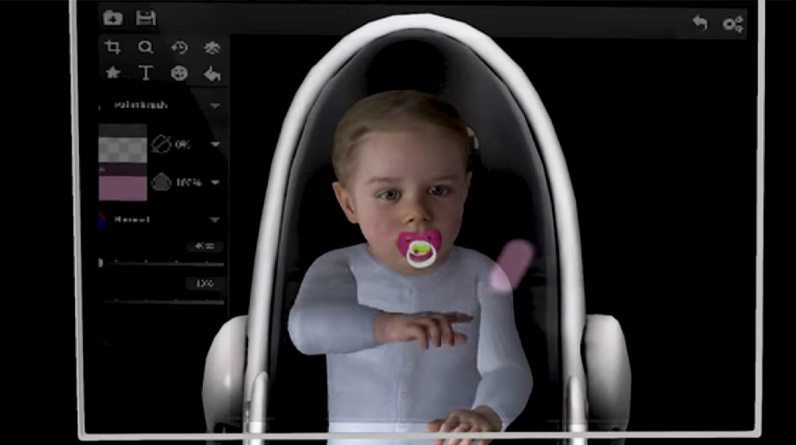This article discusses a firm that has advanced its AI to the point that it is now possible for parents to predict the characteristics that they want their children to possess. The Xenobot is a biological robot that was built with the assistance of artificial intelligence. It holds the record for being the first biological robot ever developed. It is capable of both self-repair and self-replication at the same time.
John von Neumann, a Hungarian-American mathematician, first presented the concept of a self-replicating robot in 1948. The self-replicating robot of today is unlike Neumann’s original concept in a number of important respects. The robot mother and her offspring, a new kind of organisms known as Xenobots, are totally biological. Sam Kriegman, a computer scientist at the Wyss Institute at Harvard and co-author of the Xenobots research published today in PNAS, says, “It was amazing to discover that we could [create] this Von Neumann machine, but using cells instead of robot parts.”
“People have pondered this issue for aeons,” says Joshua Bongard, a senior author and computer scientist at the University of Vermont. However, recent advances in technology have made it possible to conduct experiments aimed at building biological machines (or machines that manufacture biology, which in turn build machines).
Despite the lack of any mechanical parts, Xenobots are nonetheless referred to as “machines” by the researchers. It’s possible that scientific progress is outpacing our ability to conceptualise and discuss this novel form of artificial life. Bongard argues that this blurring forces us to reconsider whether there really is a clear distinction between machines and living things.
Intelligence Simulation

An AI software operating on UVM’s supercomputer is credited for “conceiving” the original idea for the self-replicating Xenobot. The AI utilised a sophisticated evolutionary process to virtually try out many different biological body types. The objective was to figure out what kind of cell arrangement can replicate itself. The winning design, based on input from the AI, was a cluster of cells resembling Pac-Man from the 1980s arcade game.
The Xenobots were created by biologist Douglas Blackiston, who used microcautery electrodes and surgical forceps to manually mould clusters of 4,000-5,000 frog cells swimming in a petri dish according to the AI’s blueprint. Addition of frog cells to the dish provides the parent Xenobots with the necessary ingredients to begin constructing offspring in the Pac-Man-like mouths they have evolved. Xenobot offspring mature into guardian Xenobots. The self-replication process is maintained from one generation to the next by the addition of frog cells.
Intelligence in living organisms
The “programming” that directs cell clusters to form in a certain way is the sculpting of a unique shape from stem cells. If you arrange a group of frog cells in this way, you can instruct them to construct their own reproducing organism. In Blackiston’s words, “this is an AI designing life,” or “designing a robot,” if you prefer. “[Natural] selection cannot explain these kinds of problems.”
Definitions of Intelligence in a New Era
Traditional robot parts can create robots that do well in lab conditions but typically fall short in the real world. According to Kriegman, “once you move around the world, it’s unpredictable, things are messy.” Kriegman was excited about the prospect of merging robotics materials with biological intelligence. When asked who came up with the idea of making robots out of biological materials, Kriegman credits Doug. You don’t have to pay anything for this wit. And with that, we were off to the races.
Blackiston expresses scepticism about the intelligence of Xenobots when asked directly. Blackiston, one of the two computer scientists and two biologists on the study team, prefers to refer to Xenobots as “programmed engineered creatures,” since the team believes that the Xenobots’ intelligence resides in their design and programming rather than in the Xenobots themselves. Blackiston says, “In my perspective, they are not intelligent.” Although he shares the team’s assessment that their efforts push the boundaries of scientific categorization. Bongard claims that the prevalence of modern technology is hastening the demise of the concept of a “definition.” Artificial intelligence (AI) and Xenobiotics
Created By A Brainiac
Putting aside the topic of definitions, Blackiston believes that society will have to deal with many of the uses and ramifications of this new technology, such as the possibility of artificial intelligence constructing replacement parts for humans. What if AI experimentation leads to the creation of a superior heart than the one that evolution has provided us? Blackiston wonders if artificial intelligence might one day help us design better organs. For the next decade to fifteen years, I anticipate these sorts of inquiries cropping up in various fields of medicine and ecology.
Read More Like This Here

